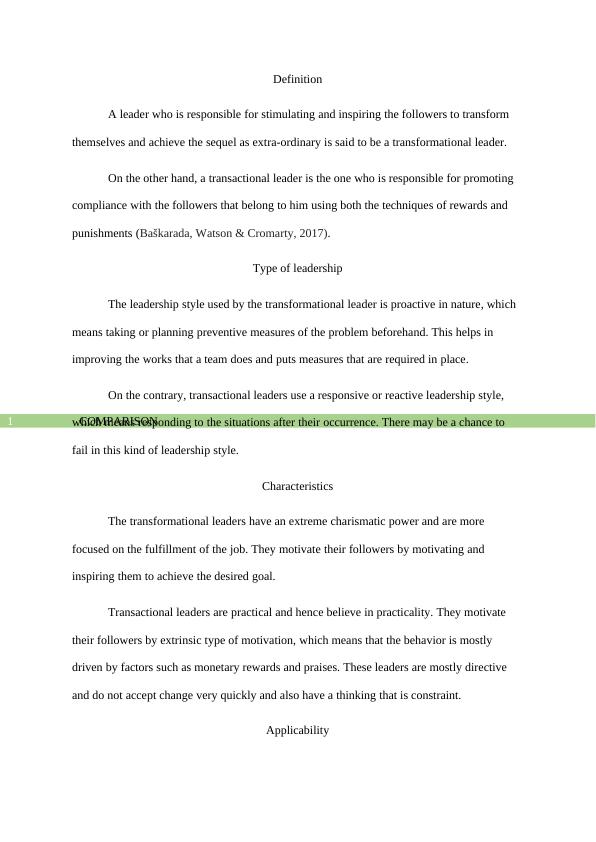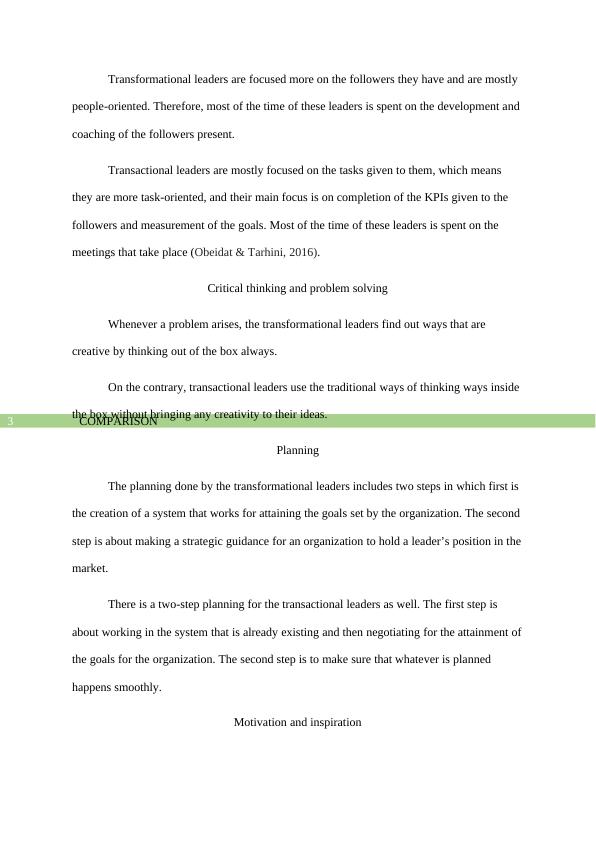Responsible For Stimulating And Inspiring
Definition and characteristics of transformational and transactional leadership styles
14 Pages2570 Words12 Views
Added on 2022-09-14
Responsible For Stimulating And Inspiring
Definition and characteristics of transformational and transactional leadership styles
Added on 2022-09-14
ShareRelated Documents
End of preview
Want to access all the pages? Upload your documents or become a member.
The Transformational Leadership Style of J & J Furnishings, Ltd
|8
|2197
|102
Transactional and Transformational Leadership and Their Impact on Workforce Behavior
|8
|2159
|165
Leadership in a Changing context PDF
|24
|3641
|25
Leadership in Business
|7
|1348
|446
Leadership Theory- Assignment
|11
|3270
|253
Leadership: Definition, Styles, and Characteristics
|11
|1398
|30




